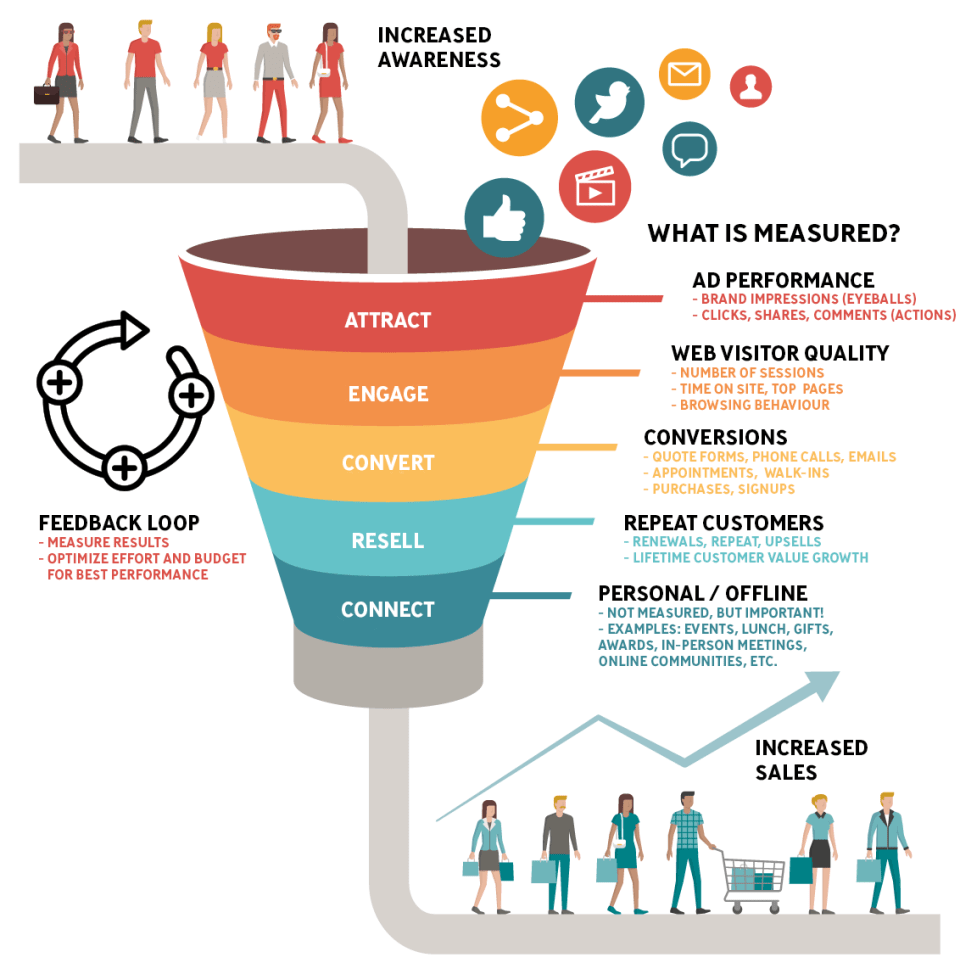Is Your Business Using Marketing Funnels To Win?
Hi everyone, it's James from Twin Creek Media, and today we're going to talk about marketing funnels. The concept of funnels isn't anything new; basically, you have people at the top, in the wide part of the funnel, and they're going down the funnel into the narrow part of the funnel. Hopefully, you end up with some folks at the bottom that become your customers.
There are different parts of the funnel that we want to get into, how we can measure each of the pieces, and what stage they're at to optimize your entire business and your marketing budget. We want to make sure things are on track, and there is constant improvement in your systems.
Attract
First of all, at the top of the funnel - the goal here is that we are increasing awareness. At this point, you are trying to get the most eyeballs possible to see your brand, and you are trying to get your company known - using things like:
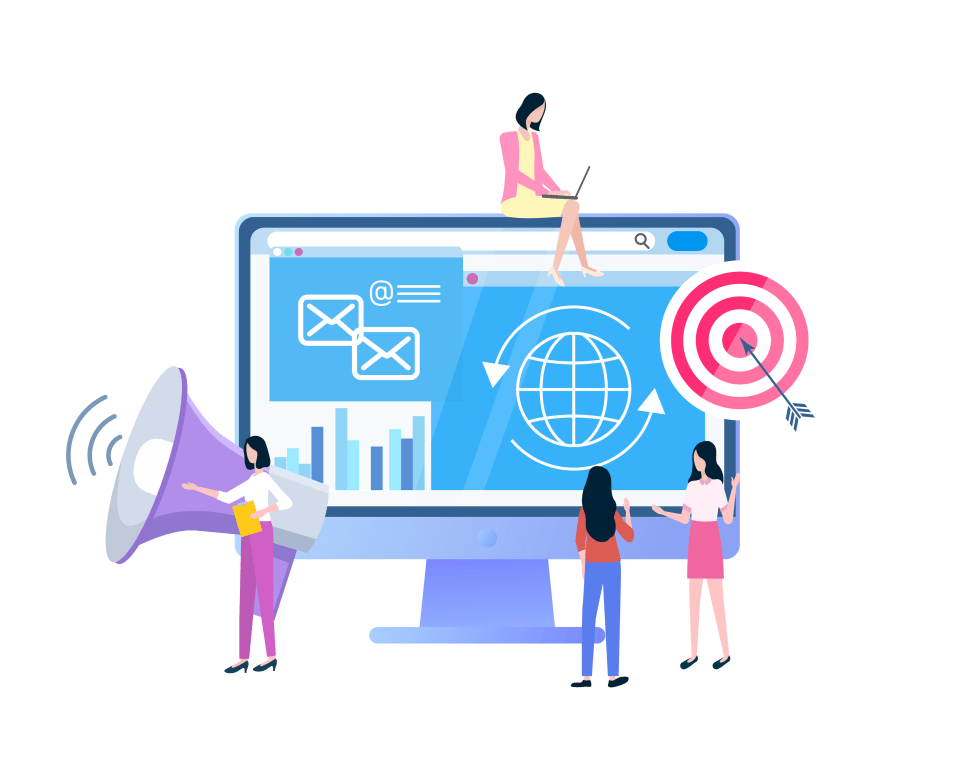
If you have a storefront, then your building signage & logo is helping increase your awareness too. These tactics are gathering together to attract new clients - this is what the Attract Stage is about.
How do you know you are winning at that stage? We want to measure things like:
"The relationship between 'Attract' and 'Engage' is tight because if customers are seeing your ads but not taking any action, then there's obviously less value."
Your marketing and advertising dollars could be going in the wrong direction. Maybe the ads are showing in front of people uninterested in your business. This audience has no intention to buy your products or services. Too often, there is a mismatch between where you're ad is shown and the demographic that actually becomes your customers.
Lots of eyeballs are great, however, if they are not taking any action, it is the wrong audience. The ads need to shift over to new a channel, platform, or location where your potential customers are hanging out already. Then the right people see the ad and take the action that you want — which leads us to the next stage.
Engage
At this stage in the funnel, we are looking at clicks, shares, and comments. We want everyone to move to this next stage - Engagement. In the end, we want to drive clicks to your website, where it becomes mostly about website visitor quality. We're talking about the number of people that hit your site from one of those ad channels. Measuring which channel is sending (good) people is key.
Your website - in this case - is not simply an online brochure, it is more of a Digital Sales Person. It is a hub, you know, we have all these different ways to drive people to your website, and your website is that Digital Sales Representative; that first point of contact often where they say to themselves...
“Oh, do I like this company? Can they help me? Do I trust this company?
Subconsciously, people are making these decisions within seconds of hitting your website. ”
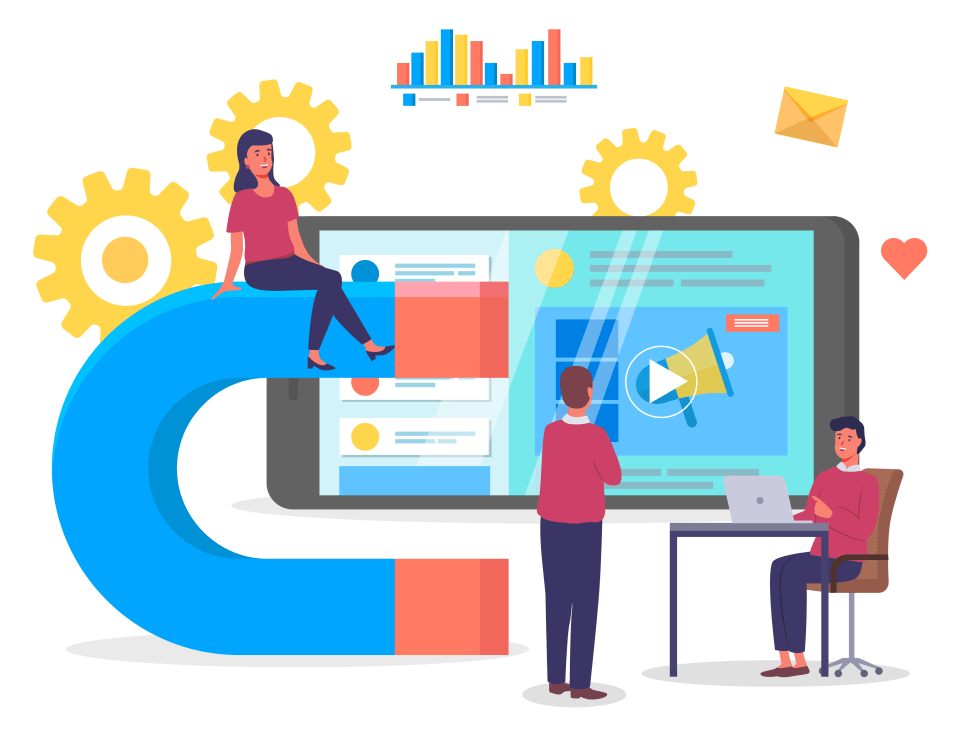
When people hit your site, we need to be measuring what they are actually doing. Therefore, they have a chance of converting into a customer or a client. After the Engagement Stage, they do move on to the Conversion Stage. That is ultimately where you are starting to really gain traction with your advertising and marketing efforts. Now you can measure $$$.
Convert
Conversion could be in a number of different forms, depending on what sort of company you have. We can talk about:
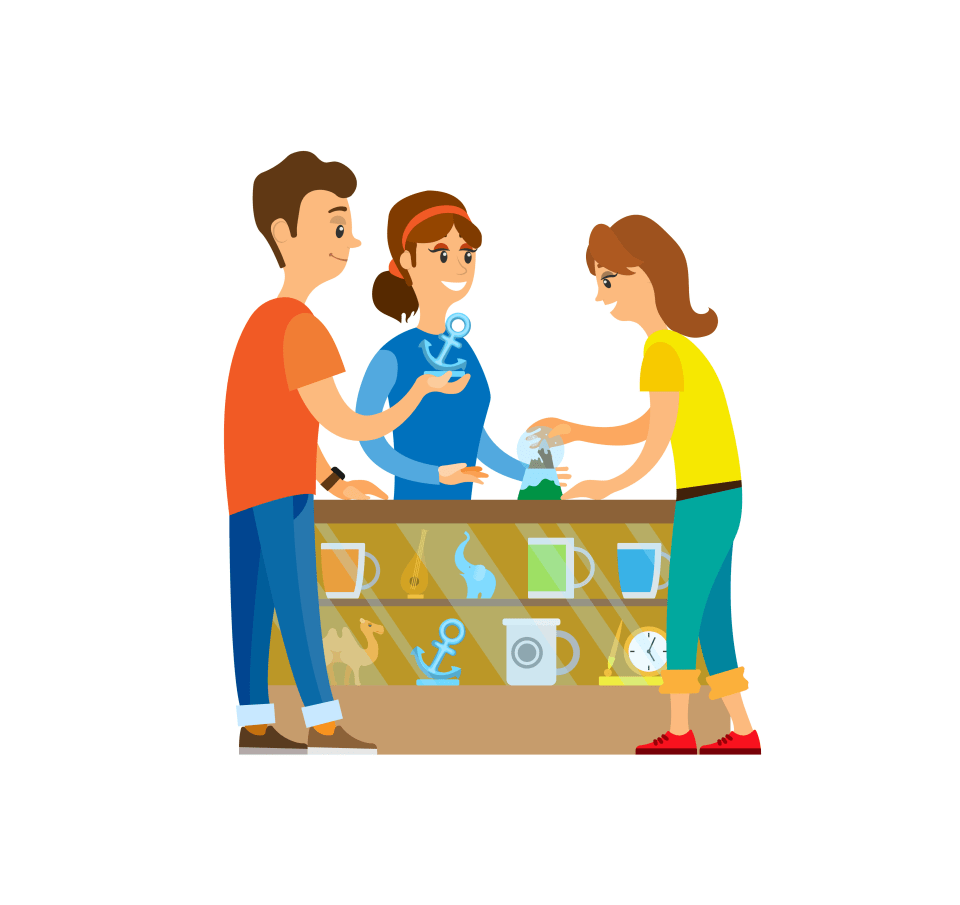
There are all sorts of things that people can do to convert. Effectively, they've made a transaction at that point, and they have shared information. The customer has made a step and you have the ability to follow up with that person because they've given you their contact information. To some degree, anonymous conversions count - could be a download where a person can get more information — that's good because they're taking a step towards eventually becoming a customer. However, you don't have their information to follow up, so they're not a true lead yet — in terms of sales lingo.
For service companies, conversions are a critical step in your marketing funnel because you're going to assign more dollar values:
"How much money did all that advertising cost — overall — to get those leads?
For retail companies, it's a little bit different because you're not just getting online inquiries, you're getting physical walk-in traffic into your store — which is a little harder to measure. However, there's a relationship between the online actions taken and how busy your store is going to get. We've seen that with lots of our clients that we work with at our agency.
After the Conversion Stage, which is a primary goal, you can look at the Resell Stage.
Resell
Resell opportunities are awesome because it means your lifetime value of the customer can increase over time. So, if you're selling something to the customer for the second time (or third, or fourth), it hasn't taken any more investment in marketing or advertising to gain that sale.
Other than perhaps salespeople following up in a service business or sending out email newsletters to your customer base. If you are a retail store or a service business, you could have a Facebook group or are putting effort into social media to build your own community.
"There are some costs associated with reselling, but typically they are way lower versus acquiring a brand new customer from scratch."
The stats are approximately five to ten times more expensive to gain a new customer versus selling something to an existing one.
We are measuring at this step:

These values help people feel better when they're seeing results. Initially, you might be freaked out...
“Oh, wow it costs $300 to get a new customer, but our customer only buys something worth $100. So, we're losing $200 every single time!”
In a limited view, that's correct. But if the customer eventually buys $1000s of dollars of products or services, then the initial $300 acquisition cost is okay.
What are we measuring?
Connect
Connect is a little bit like what I said earlier about fostering that growth in the community; it's a lot easier to sell to existing customers than it is to gain new ones. We want to treat them well! This is basic stuff — people like doing business with people they like.
We don't always measure these things in our agency for the companies we're working with, but they're super important. Activities at the Connect stage include:
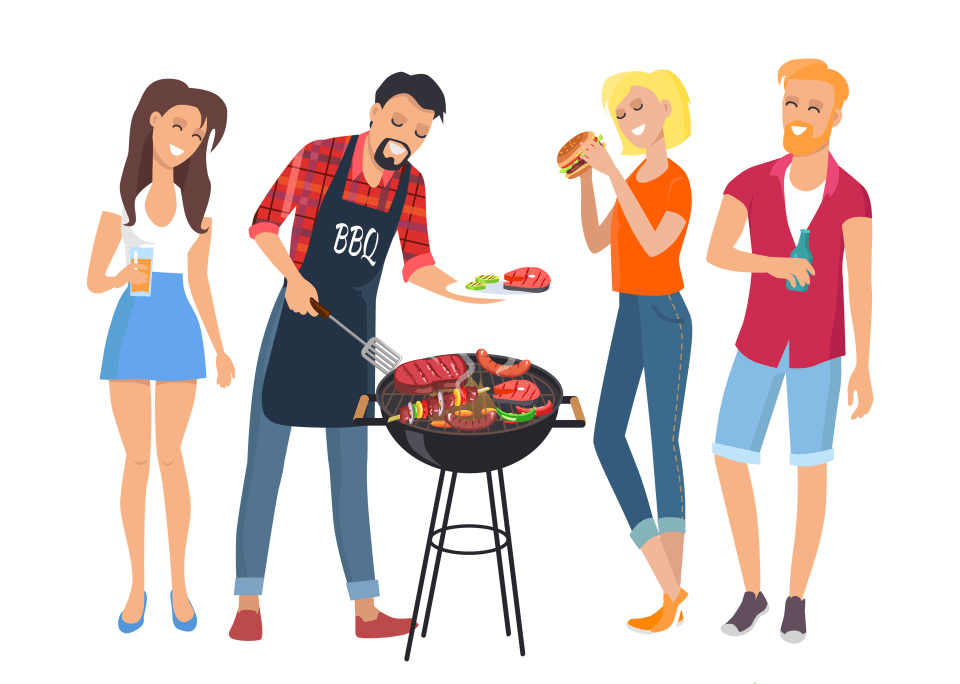
Feedback Loop
You want to feed data collected by the marketing funnel into the Feedback Loop. If you're not measuring things, you don't know what to change, you don't know what to tweak or improve, you have no way to dial in things to change the marketing machine.
By measuring the right things, using various digital tools, analytics, spreadsheets, and crunching some numbers, you know that you're spending money in the right way. You have confidence in your marketing plan, you have confidence in the ads, that they're working — they're not just out there doing absolutely nothing and wasting your money.
"This part of the funnel is about optimizing your efforts. Are you winning yet?!"
You can optimize your marketing budget and ad performance to get a better bang for the buck. Your ROI is going to be amazing at that point — when you have the visibility to dial in the data to use it for your advantage and to be more successful.
It's not just about money, non-profits and charities have goals other than making a profit; it could be the overall membership growth or their community participation. Marketing funnels can be applied in every situation for every organization!
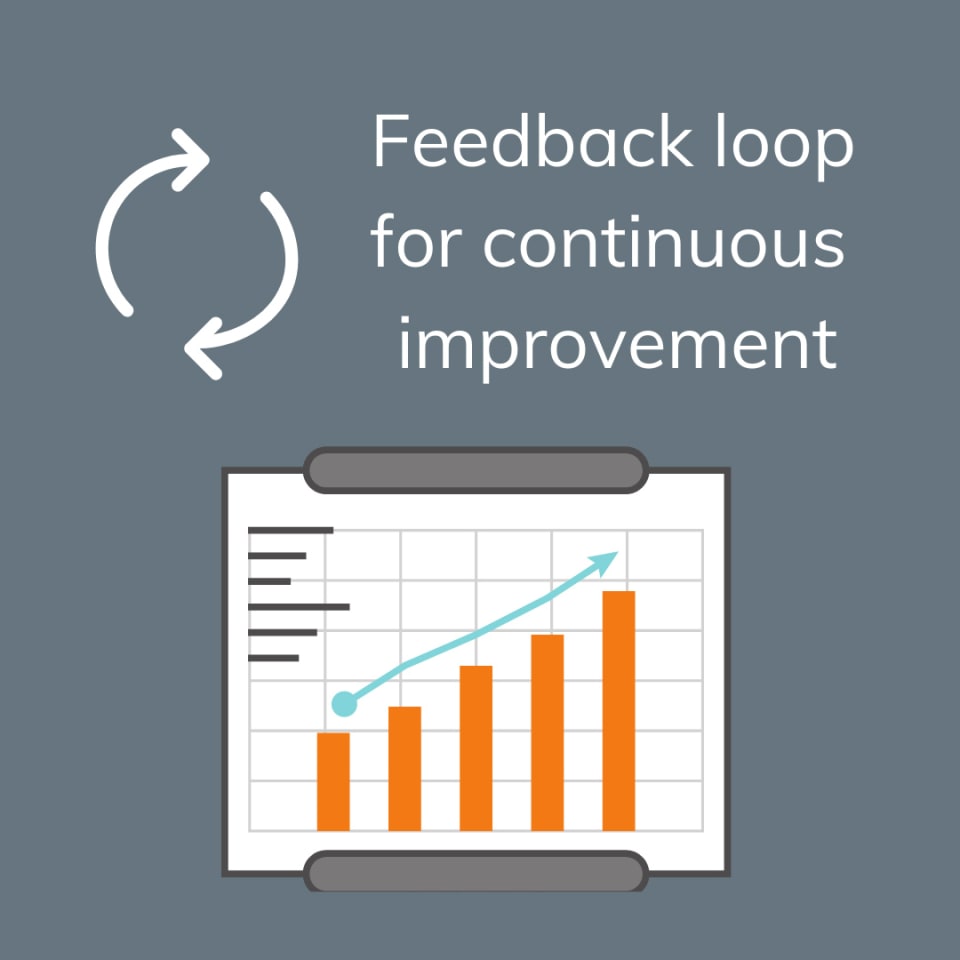
Hopefully, this helps a little bit. If you need some help using marketing funnel strategies for your company, give us a shout we would be happy to help!
Stay tuned for some upcoming examples of real marketing funnels - real companies, real numbers, and real results!
Get to know the Okanagan’s Marketing Department - we are here to help you grow.

